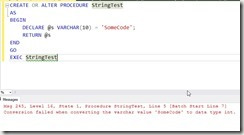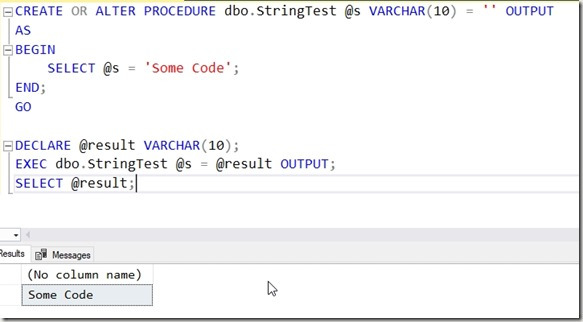Another post for me that is simple and hopefully serves as an example for people trying to get blogging as #SQLNewBloggers.
One of the lesser used and known features of T-SQL are the output parameters from a stored procedure. I used one of these recently, so I wanted to blog about it.
Getting a String
I was working on part of the 2018 Advent of Code, which is a great set of programming exercises for anyone. I typically build a procedure to solve each puzzle, since that’s a common way of capturing code. If there’s a single numeric result, a RETURN code works fine.
In one puzzle, I needed to return a string. If you try this in a procedure, it won’t work.
Instead, I need another solution. I could certainly SELECT back my string, but in this case, I wanted to have this assigned to a variable. I could do that in a few ways, but decided the easiest was an OUTPUT parameter.
To add an output parameter to my procedure, I first add my variable as a regular parameter.
CREATE OR ALTER PROCEDURE dbo.StringTest
@s VARCHAR(10)
AS
BEGIN
SELECT @s = 'Some Code'
END
GO
Next, I add the OUTPUT keyword after the type.
CREATE OR ALTER PROCEDURE dbo.StringTest
@s VARCHAR(10) = '' OUTPUT
AS
BEGIN
SELECT @s = 'Some Code'
END
GO
My call to the procedure should also include the OUTPUT keyword.
DECLARE @result VARCHAR(10);
EXEC dbo.StringTest @s = @result OUTPUT;
SELECT @result;
This works fine, allowing me to pass some value back to the caller.
Not something I use often, but if I need to get some singular value back, this works.
SQLNewBlogger
This post was started at 10:00am one morning. I got back to this sentence at 10:09. That was the entire setup of the code, capturing screen shots, and writing the post. Easy for you to do as well.
Give this a try. How would you use an OUTPUT parameter?




